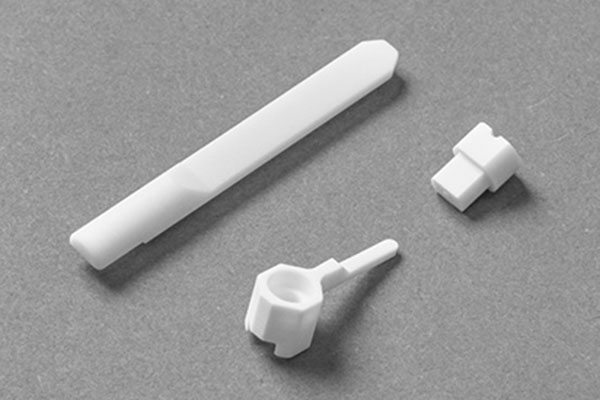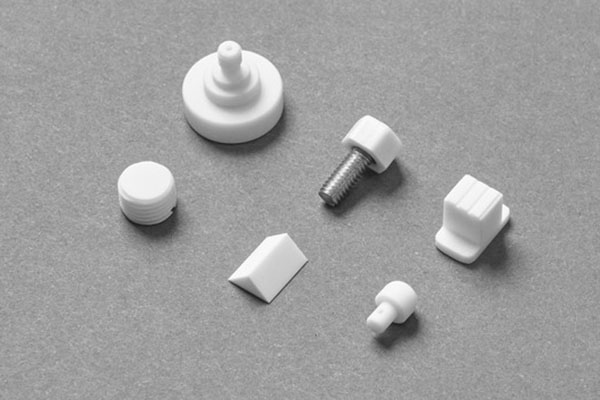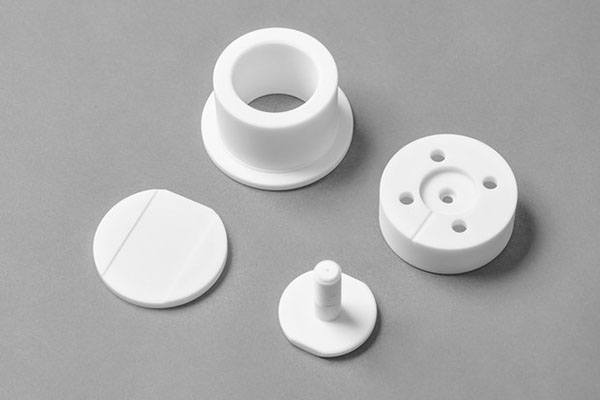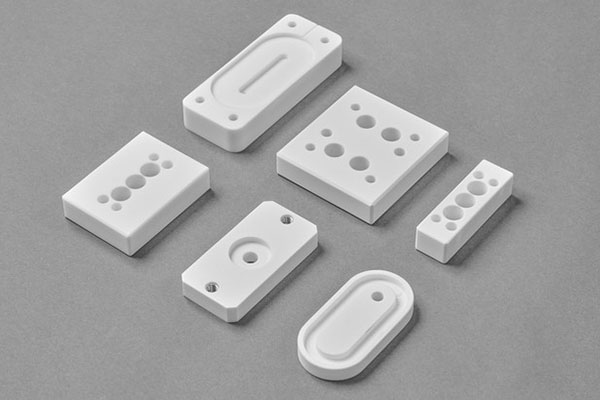Materiais de peças de cerâmica
Ceramic materials, being an inorganic non-metal, have always been a significant part of human life. From ancient pottery to modern high-tech products, ceramics are used in various fields including electronics, aviation, healthcare, and construction. Their excellent heat resistance, corrosion resistance, hardness, and insulation make them the go-to material for many high-performance applications.
In the electronics industry, ceramics are crucial for making circuit boards, capacitors, and sensors due to their great insulation and thermal stability. The aviation sector takes advantage of ceramics' ability to withstand high temperatures and their lightness for making turbine blades and spacecraft's heat shields. In healthcare, ceramics are favored for artificial joints and dental implants because they are biocompatible and strong. In construction, besides decorative tiles and sanitary ware, ceramics are also used as building materials due to their fire and corrosion resistance. Moreover, ceramics play vital roles in chemical, energy, and environmental sectors, serving as catalyst carriers, filter membranes, and fuel cell electrolyte materials.
Peças de cerâmica que fazem o serviço
Be good at product structure optimization and greatly reduce the cost of Ceramics Parts Materials

Design da peça
Design Estético e Estrutural

Fabricação de moldes
Design, Confirmação de Facilidade de Manufatura

Produção de Produto
Imported, high-speed equipment

Montagem do Produto
Matéria-Prima, Inspeção e Montagem
Model classification of Ceramics Parts Materials
99.5% Al2O3: High purity alumina ceramic with excellent electrical insulation and mechanical strength.
96% Al2O3: commonly used for wear-resistant parts and cutting tools.
SN-220: It has extremely high hardness and wear resistance, suitable for structural components in high-temperature environments.
SN-800: Good thermal stability, suitable for engine components and bearings.
Y-TZP (Yttria Tetragonal Zirconia Polycrystals): It has high fracture toughness and crack resistance, and is commonly used in medical implants and precision mechanical components.
Ce TZP (Cerium Tetragonal Zirconia Polycrystals): It also exhibits good toughness at low temperatures.
SiC-N: Combining the advantages of silicon nitride, it has higher thermal conductivity and oxidation resistance.
Reaction bonded SiC: It is sintered through chemical reactions and has excellent heat shock resistance.
TiB2: It has very high hardness and conductivity, suitable for electrode materials and cutting tools.
Machining Process of Ceramics Parts
First up is pressing. Imagine taking powdered ceramic stuff and pressing it into a mold to get the shape you want. After that, it's baked or sintered to make it strong. This method is great for simple shapes.
Next, there's slurry casting. Here, you mix ceramic powder with water or another liquid to create a slurry. You pour this into a mold, let it dry, then remove it from the mold and bake it. This technique is perfect for making complex or thin-walled ceramic items.
Then there's extrusion. Picture squeezing toothpaste out of the tube; that's how this works. The ceramic paste is pushed through a machine to form continuous strips or tubes, which are then cut to size and baked. This is ideal for making tubes or rods.
Injection molding is similar to how plastic is shaped. The ceramic paste is injected into a mold, cooled to harden, then taken out of the mold and baked. This can produce very precise and intricate ceramic parts.
Finally, 3D printing has become popular recently. It builds objects layer by layer from a digital design, allowing for complex ceramic structures to be made directly from a computer model.
Each of these methods has its own strengths and weaknesses. Picking the right one is crucial for getting the best performance out of your ceramic materials. As technology progresses, new techniques and improvements keep coming, opening up even more possibilities for ceramic applications.
FAQ About Ceramics Parts
In engineering, the commonly used types of ceramic parts include alumina, silicon nitride, and zirconia. These materials each have their own unique characteristics, such as aluminum oxide being widely used due to its high hardness and good wear resistance; Silicon nitride is known for its excellent thermal stability and corrosion resistance; Zirconia, due to its excellent toughness and crack resistance, is often used to manufacture components that require significant mechanical stress. Each type of ceramic has its specific application scenarios, and the selection should be based on actual needs.
Ceramic parts perform better than metal parts in certain aspects. For example, ceramics have higher hardness and better wear resistance, which means they can work longer in harsher environments. In addition, many ceramic materials have strong resistance to chemicals and corrosion, making them highly suitable for use in chemical treatment equipment or marine environments. However, a major drawback of ceramics is their high brittleness, which limits their use in applications that can withstand impact loads. Overall, although ceramics are superior to metals in some aspects, they may not be as suitable as metals in other fields.
Ceramic parts are widely used in engineering. In the aerospace field, ceramics are used to manufacture turbine blades and other high-temperature structural components because they can withstand extreme temperatures without deformation. In the electronics industry, ceramics are used to make circuit board substrates and insulators, utilizing their excellent electrical insulation properties. Ceramics are also widely used in the medical field, such as artificial joints and dental implants, because ceramics have good biocompatibility and wear resistance. In addition, ceramics also play an important role in industries such as chemical, energy, and environmental protection, such as serving as catalyst carriers, filter membranes, and electrolyte materials for fuel cells.
The manufacturing process of ceramic parts usually includes several key steps: first, mix the raw material powder with other additives to form a uniform mixture. Then, the mixture is shaped into the desired shape through compression molding, injection molding, or other methods. Next, drying is carried out to remove excess moisture, followed by sintering process, during which the material will densify and enhance strength at high temperatures. Finally, precision machining such as grinding, polishing, or coating may be necessary to meet specific size and surface quality requirements. The entire manufacturing process requires precise control of factors such as temperature, time, and pressure to ensure the quality of the final product.
There are indeed some environmental considerations when using ceramic parts. Firstly, the production of ceramics often requires high energy consumption, especially during the sintering process which requires a significant amount of heat. Secondly, certain types of ceramics may contain toxic or harmful substances, such as lead or other heavy metals, which may cause environmental pollution if not handled properly. However, many modern ceramic production processes are striving to reduce energy consumption and emissions while developing more environmentally friendly materials and technologies. In addition, ceramics themselves are durable and recyclable materials, which means they can be reused at the end of their service life, thereby reducing waste generation. Therefore, despite the challenges, the impact of ceramic use on the environment can be effectively reduced by adopting sustainable methods and technologies.
If ceramic parts are damaged, the possibility of repair or refurbishment depends on the degree and type of damage. Minor surface scratches or cracks can sometimes be repaired by grinding and polishing, but this is usually only applicable to situations that do not affect structural integrity. For more severe injuries, such as fractures or deep cracks, repair may be more complex or even impossible. In this case, replacing damaged parts is usually a safer option. However, it is worth noting that with the development of technology, some advanced repair techniques are now being developed, such as using special adhesives or filling materials to repair ceramic parts. Nevertheless, preventive measures remain the best strategy, ensuring proper installation and maintenance of ceramic parts can reduce the risk of damage.